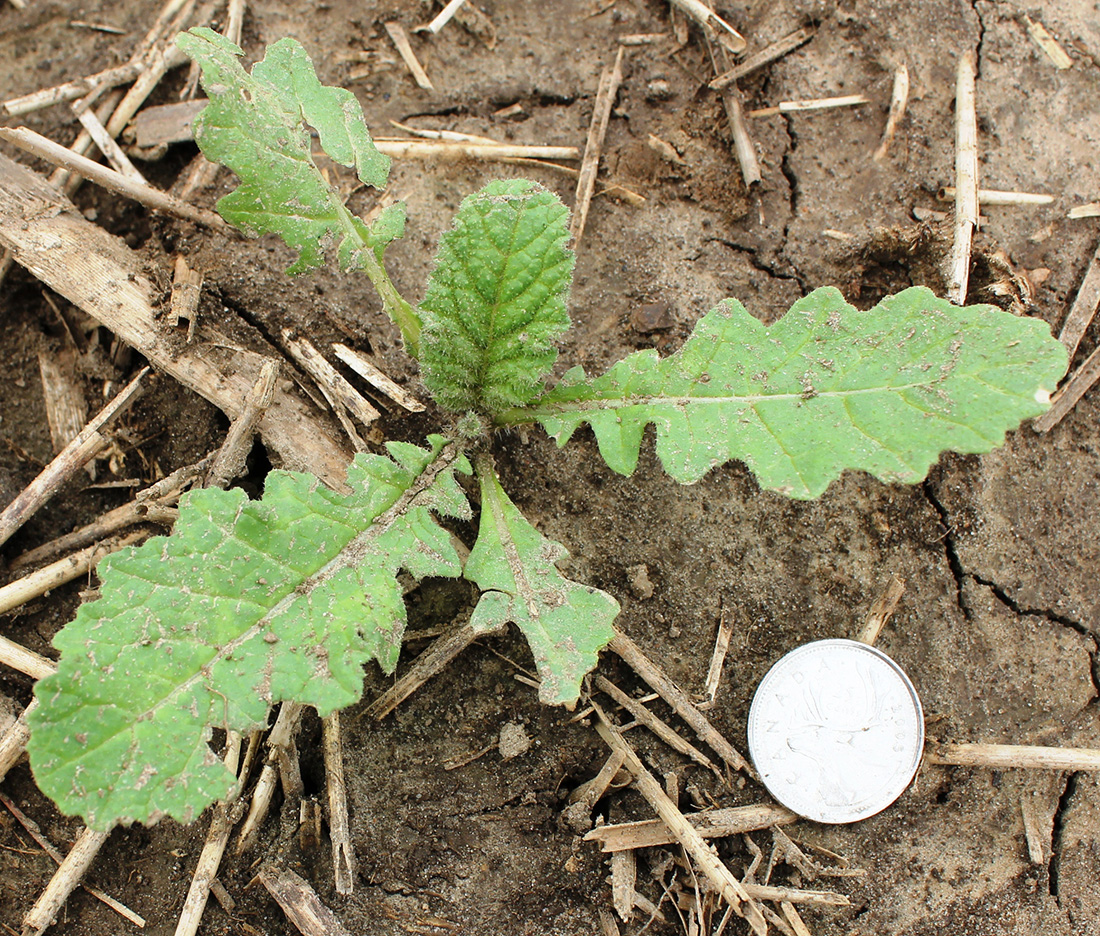Wild Mustard
- Mustard (Brassicaceae family):
- Sinapis arvensis L.
- EPPO code:
- SINAR
- Other names:
- Common mustard, field mustard, mustard, kale, charlock, yellow mustard, herrick
Species information
- Lifecycle:
- Annual, winter annual
- Propagation:
- Reproduces by seed
- Emergence:
- One of the first broadleaf weed species to emerge in the spring
- Habitat:
- Wild mustard is most often found in winter cereal crops, particularly in central and southern Ontario. It is rarely found in spring planted crops since its life cycle is initiated very early in the spring.
- Competitiveness:
- Agriculture and Agri-Food Canada research has shown that wild mustard densities of 20,000 plants/ac can result in an 18–20% yield loss in corn and soybeans.
Identification clues
Seedling
- Cotyledons:
- Kidney shaped
- First leaves:
- Hairy, ovate with wavy toothed margins
- Mature leaves:
- Wild mustard’s mature leaves are hairy, coarse to the touch, elongated, and lobed with wavy toothed margins.
Mature plant
- Stem:
- Wild mustard’s stem is erect, reaches almost 1 m in height, hairy and branched.
- Flowers:
- The plant has a small cluster of yellow flowers each with four small, narrow sepals and four large, broad petals arranged in a cross formation.
- Seeds:
- Its seeds are small, round and black to purplish-black.
- Roots:
- Taproot.
Often mistaken for
I know it's not Volunteer canola because wild mustard is relatively hairy and coarse to the touch and its leaves are supported by short stalks that are lacking in canola. Most volunteer canola will be tolerant to the herbicide active ingredients glyphosate and glufosinate.





Updated: January 13, 2023
Published: January 13, 2023